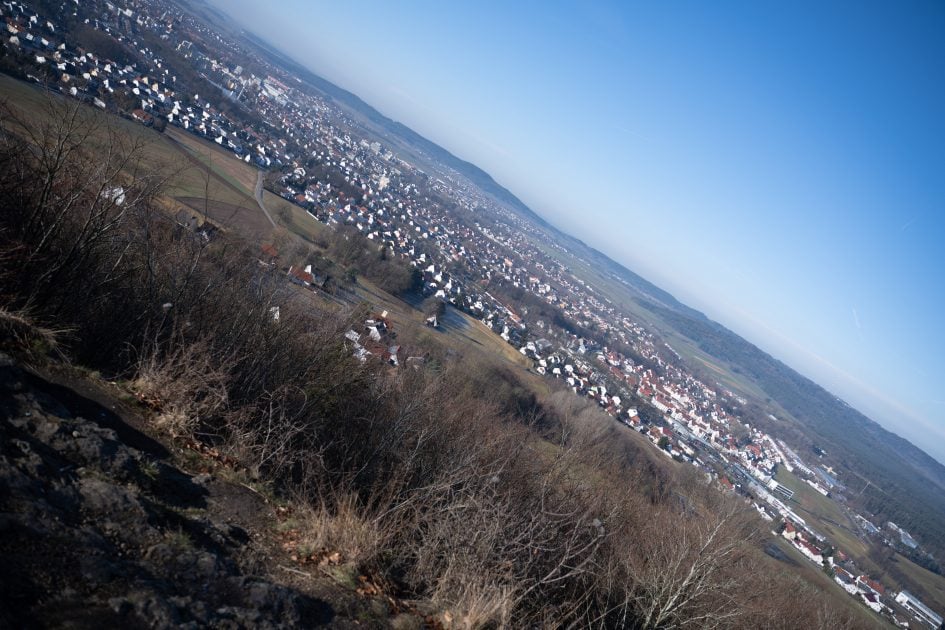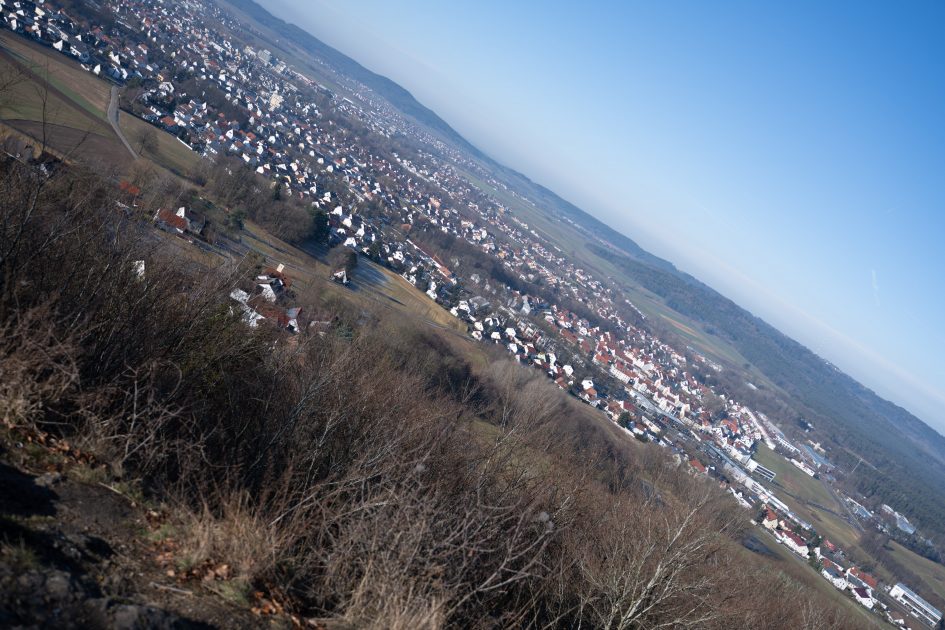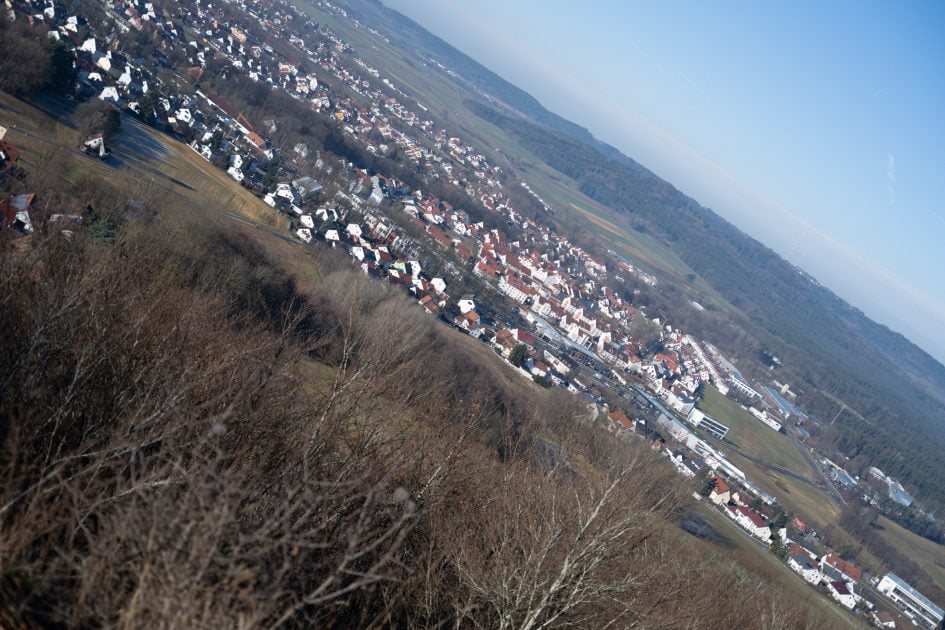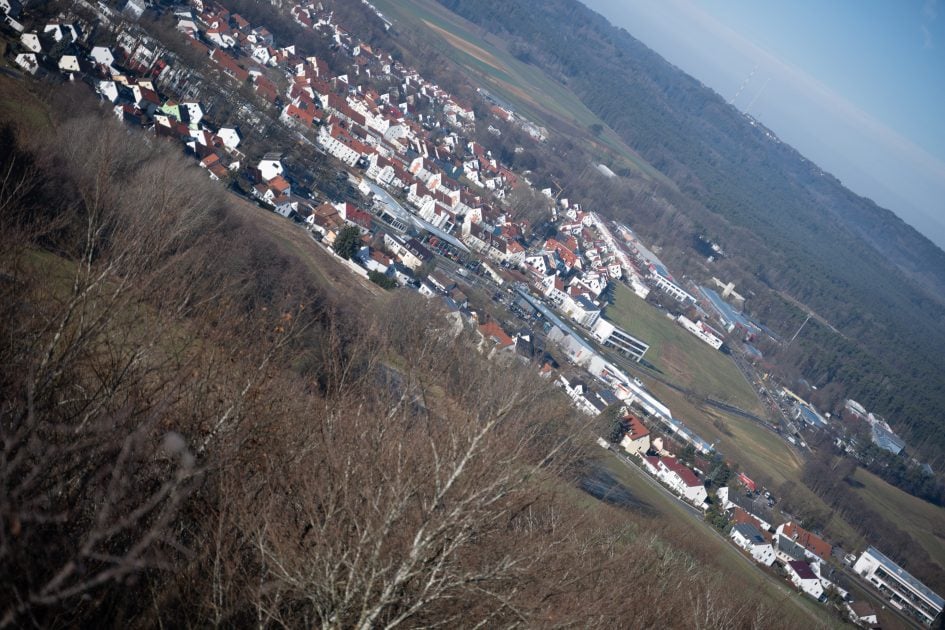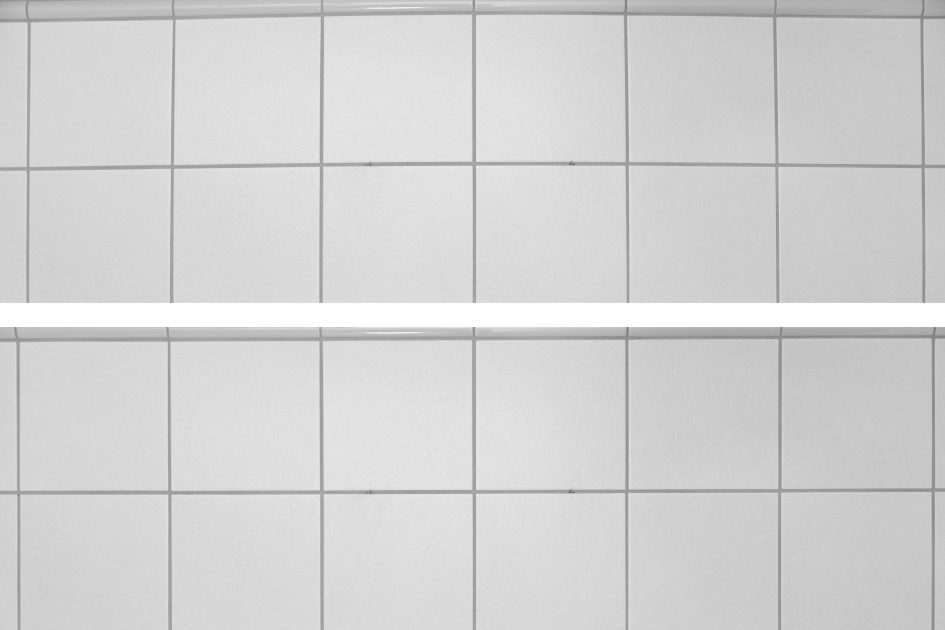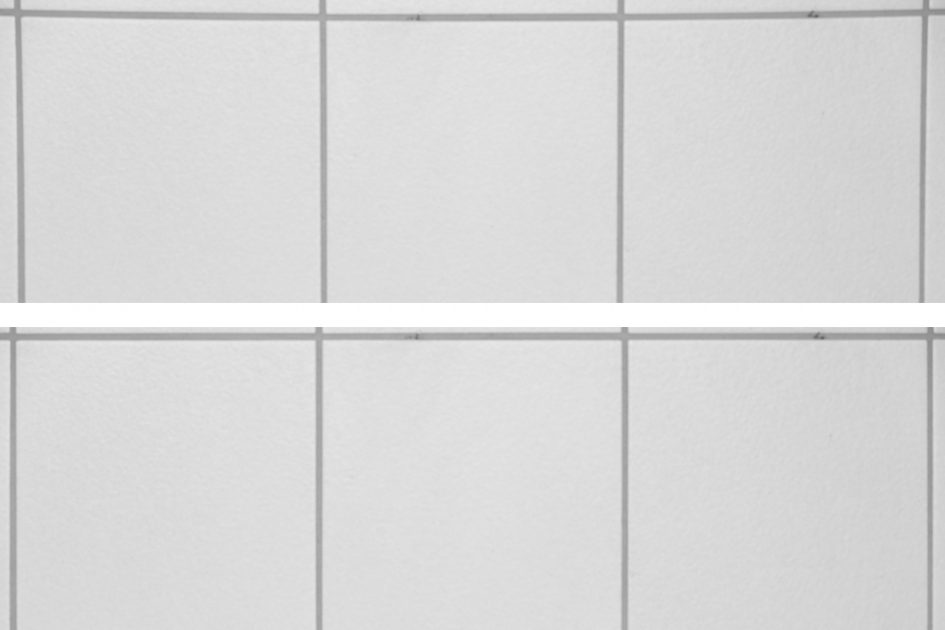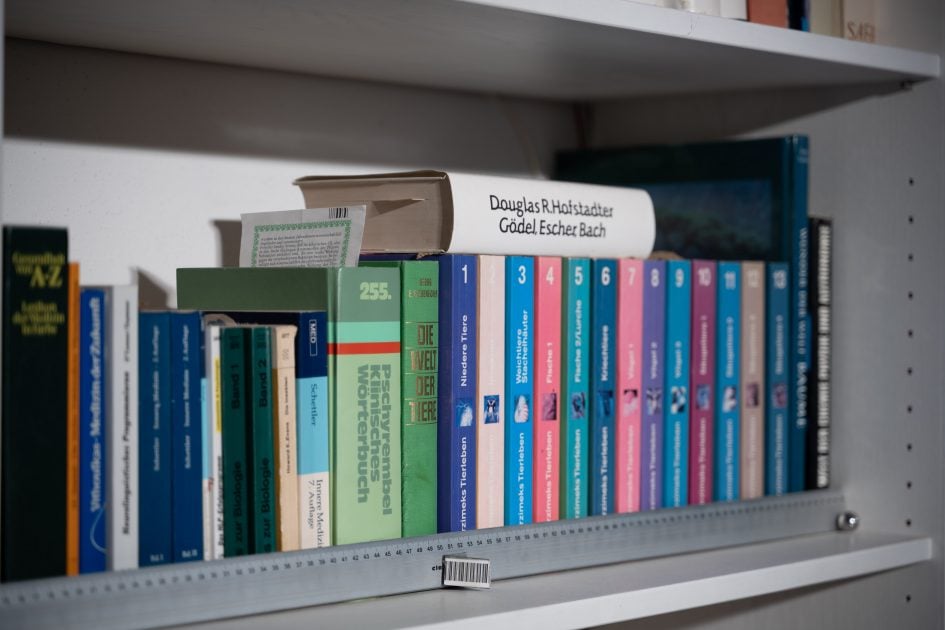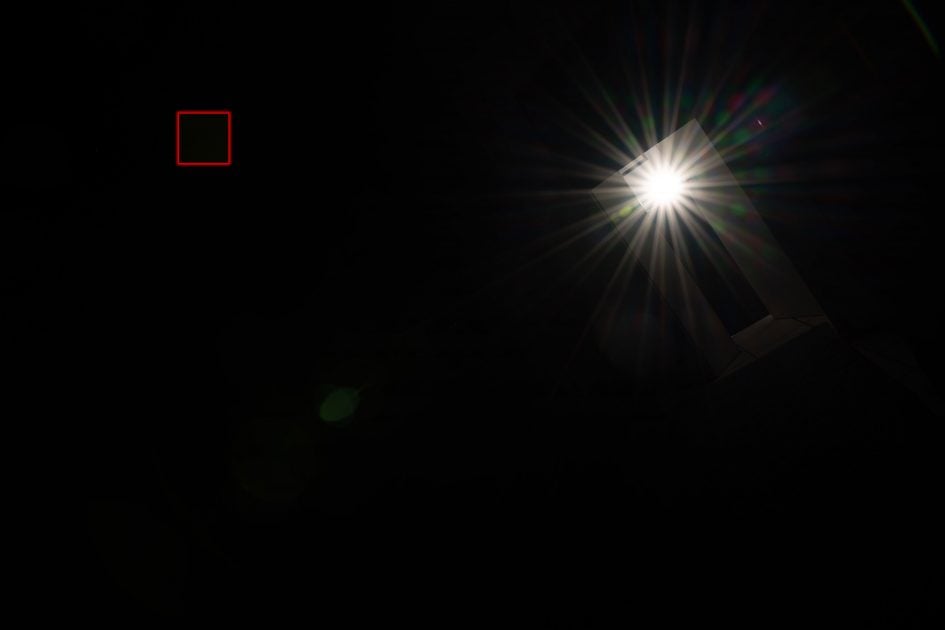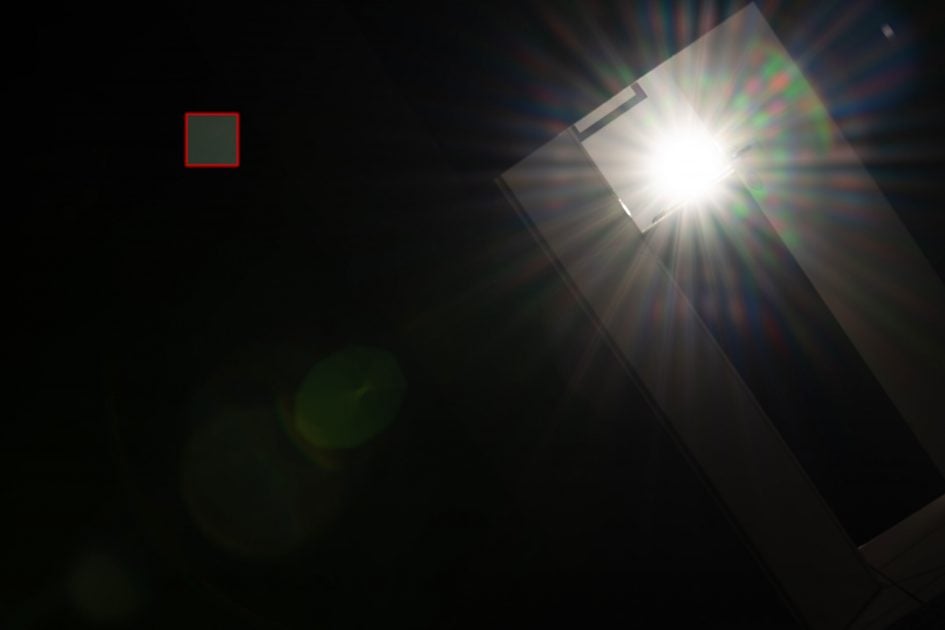Nikon Z 28-75mm f2.8 review
-
-
Written by Thomas
Quality
Longitudinal Chromatic Aberration and focus shift
Lenses with focal ratios of f2.8 or larger are often prone to longitudinal color aberrations (loCA, a.k.a. “axial color” or “bokeh CA”). These normally show up as magenta coloration in the foreground and greenish hues in the background and are not easily corrected in post-processing. The new Z-Nikkor shows very little loCA and no focus shift when stopped down.
Nikon Z 28-75mm f2.8 Longitudinal Chromatic Aberration (loCA)
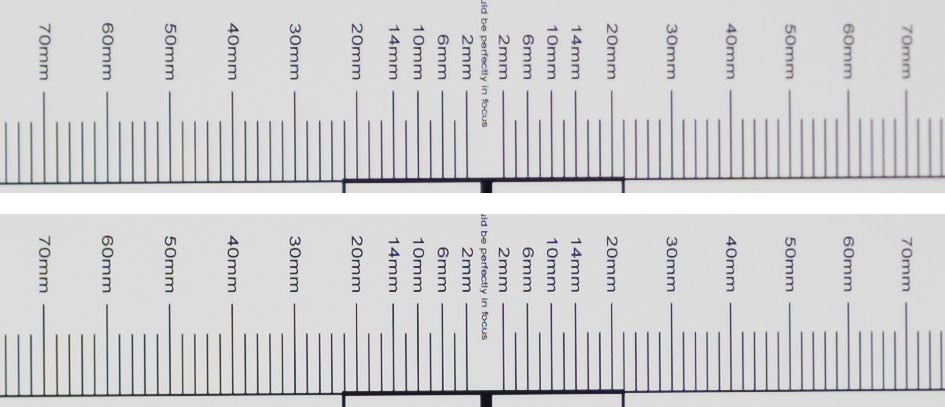
100% crops at 75mm f2.8 (top), f4.0 (bottom); left = foreground, right = background
Sharpness and contrast
Let’s have a look at the theoretical performance of the Nikon Z 28-75mm f2.8, Tamron 28-75mm f2.8 Di III (1st generation), Nikon Z 24-70mm f4 S and Nikon Z 24-70mm f2.8 S:
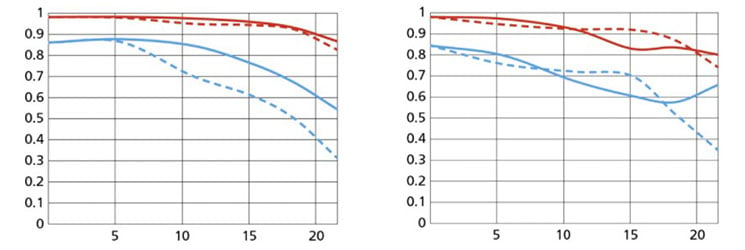
Above: Nikon Z 28-75mm f2.8 at 28mm f2.8 (left), 75mm f2.8 (right)
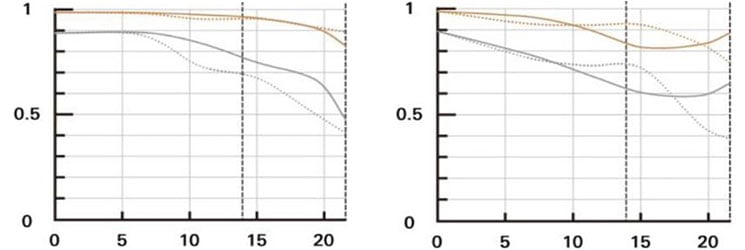
Above: Tamron 28-75mm f2.8 Di III (1st generation) at 28mm f2.8 (left), 75mm f2.8 (right)
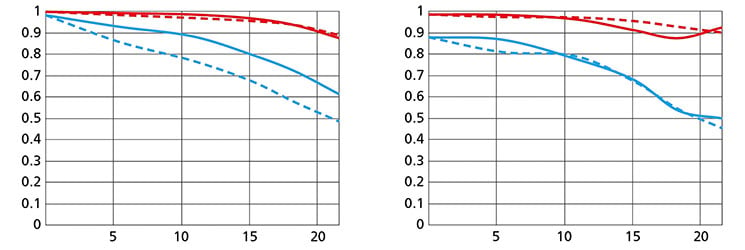
Above: Nikon Z 24-70mm f2.8 S at 24mm f2.8 (left), 70mm f2.8 (right)
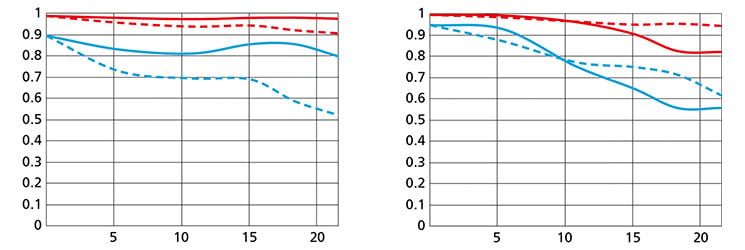
Above: Nikon Z 24-70mm f4 S at 24mm f4.0 (left), 70mm f4.0 (right)
These MTF charts show the computed lens-performance of lenses wide open at infinity without influence of diffraction at 10 line-pairs/mm (red) and 30 lp/mm (blue). Higher values are better (more contrast) and the closer the dotted and solid lines are together the less contrast dependents on the orientation of the test-pattern (less astigmatism). The x-axis displays the distance from the optical axis (=center of the sensor) in mm.
The MTF-charts of the new Nikon look very similar to the Tamron G1 although there are some slight deviations. So perhaps there are small differences in the type of glass – or Nikon’s computers simply calculate the MTF of a lens differently than Tamron’s computers. From the charts the new Z 28-75mm f2.8 should be behind the flagship Z 24-70mm f2.8 S in overall contrast and detail resolution. Comparing the new lens to the Z 24-70mm f4 S is inconclusive as the focal ratios differ so it depends upon how well the Z 28-75 sharpens up when stopped down to f4.0.
Looking at all the facts currently known about the new Nikon Z 28-75mm f2.8 and the 1st generation Tamron 28-75mm f2.8 Di III it looks like both lenses are based on the same optical design and should perform very, very similarly. On the outside size and weight is also very close with the Nikon having the typical Z-Nikkor look and feel plus the added benefit of its multi function ring, thorough weather sealing, and fluorine coating. This all should make for a decent standard zoom lens with constant f2.8 aperture. The question remains, why Nikon did not use the optical design of Tamron’s 2nd generation (G2) lens which recently hit the streets and is a clear improvement over their G1 design.
Let’s see how this theoretical performance translates into real life results in the sharpness test based on Siemens-stars shot on a 45MP Nikon Z7. Processing was done in Lightroom 11.1/CRAW 14.1 from RAW to Adobe Color profile with the built-in lens profile compensating CA, distortion, and vignetting. Noise-reduction is set to 0, sharpening to 50/0.5/36/10, with no extra tone, color, or saturation adjustment. White-balance was adjusted to a neutral white and I did some exposure compensation to make the brightness of all crops match. So you will not see light fall-off in the corners.
The following are all 100% crops!
First up is an overview of the wide-open performance at different focal lengths. You can jump to the detailed results at different apertures and comparisons with other lenses by clicking on the crops of the respective focal length.
Nikon Z 28-75mm f2.8; 100% crop from center, DX-corner, FX-corner
Above: 28mm, f2.8
Above: 35mm, f2.8
Above: 50mm, f2.8
Above: 75mm, f2.8
Nikon’s new lens delivers excellent sharpness in the center and very good sharpness at the DX-corner throughout the zoom-range with just a little softening at 75mm. The FX-corner looks pretty soft in comparison with it’s weakest performance at 35mm. The lens exhibits very little field curvature at the long end but has some at the shorter focal lengths.
The following 100% crops for each focal length shows the Nikon Z 28-75mm f2.8 from wide open down to f11 compared to the Tamron 28-75mm f2.8 Di III (1st generation), Nikon Z 24-70mm f2.8 S and Nikon Z 24-70mm f4 S. The Tamron was shot on a 42MP Sony A7R II with a 3% lower linear resolution which makes these test-shots still very much comparable.
One thing is very clear from these shots: The Nikon Z 28-75mm f2.8 and Tamron 28-75mm f2.8 Di III (1st generation) perform virtually identical.
If you want to see all the details and comparisons read on. Or you can fast-forward to the performance at long distances.
Performance at 28mm:
Nikon Z 28-75mm f2.8 at 28mm compared; 100% crop from center, DX-corner, FX-corner

Above: Nikon Z 28-75mm f2.8 at 28mm, f2.8

Above: Tamron 28-75mm f2.8 Di III (1st generation) on a Sony A7R II at 28mm, f2.8; also available at f4.0, f5.6, f8.0

Above: Nikon Z 24-70mm f2.8 S on a Nikon Z7 at 28mm, f2.8; also available at f4.0, f5.6, f8.0

Above: Nikon Z 28-75mm f2.8 at 28mm, f4.0

Above: Nikon Z 24-70mm f4 S at 28mm, f4.0, also available at f5.6, f8.0, f11

Above: Nikon Z 28-75mm f2.8 at 28mm, f5.6; also available at f8.0, f11
At 28mm the new Nikon Z 28-75mm f2.8 is even sharper in the center than the Z 24-70mm f2.8 S and sharper in the DX image circle than the Z 24-70mm f4S (at f4.0!). Impressive. But in the FX-corner both 24-70mm Nikkors win. You need to stop the new Nikkor down to f8 to get good FX-corner performance.
Performance at 35mm:
Nikon Z 28-75mm f2.8 at 35mm compared; 100% crop from center, DX-corner, FX-corner

Above: Nikon Z 28-75mm f2.8 at 35mm, f2.8

Above: Tamron 28-75mm f2.8 Di III (1st generation) on a Sony A7R II at 35mm, f2.8; also available at f4.0, f5.6, f8.0

Above: Nikon Z 24-70mm f2.8 S at 35mm, f2.8; also available at f4.0, f5.6, f8.0

Above: Nikon Z 28-75mm f2.8 at 35mm, f4.0

Above: Nikon Z 24-70mm f4 S at 35mm, f4.0, also available at f5.6, f8.0, f11

Above: Nikon Z 28-75mm f2.8 at 35mm, f5.6; also available at f8.0, f11
Similar story as at 28mm but the FX-corner of the new Nikkor does not sharpen up as nicely when stopped down as at 28mm.
Performance at 50mm:
Nikon Z 28-75mm f2.8 at 50mm compared; 100% crop from center, DX-corner, FX-corner

Above: Nikon Z 28-75mm f2.8 at 50mm, f2.8

Above: Tamron 28-75mm f2.8 Di III (1st generation) on a Sony A7R II at 50mm, f2.8; also available at f4.0, f5.6, f8.0

Above: Nikon Z 24-70mm f2.8 S at 50mm, f2.8; also available at f4.0, f5.6, f8.0

Above: Nikon Z 28-75mm f2.8 at 50mm, f4.0

Above: Nikon Z 24-70mm f4 S at 49mm, f4.0, also available at f5.6, f8.0, f11

Above: Nikon Z 28-75mm f2.8 at 50mm, f5.6; also available at f8.0, f11
At 50mm f2.8 the Z 24-70mm f2.8 S pulls slightly ahead of the Z 28-75mm f2.8 in the DX image-circle. But the latter is still sharper than the Z 24-70mm f4 S at f4. Except again for the FX-corner where the new Z-Nikkor simply is no match for its older siblings. To achieve a well-balanced sharpness up into the FX-corner stop the lens down to f5.6 or even f8.
Performance at 75mm:
Nikon Z 28-75mm f2.8 at 75mm compared; 100% crop from center, DX-corner, FX-corner

Above: Nikon Z 28-75mm f2.8 at 75mm, f2.8

Above: Tamron 28-75mm f2.8 Di III (1st generation) on a Sony A7R II at 75mm, f2.8; also available at f4.0, f5.6, f8.0

Above: Nikon Z 24-70mm f2.8 S at 70mm, f2.8; also available at f4.0, f5.6, f8.0

Above: Nikon Z 28-75mm f2.8 at 75mm, f4.0

Above: Nikon Z 24-70mm f4 S at 70mm, f4.0, also available at f5.6, f8.0, f11

Above: Nikon Z 28-75mm f2.8 at 75mm, f5.6; also available at f8.0, f11
At 75mm the FX-corner of Nikon’s new Z 28-75mm f2.8 zoom lens finally shows better performance almost matching the Z 24-70mm f2.8 S at f2.8 and Z 24-70mm f4 S at f4.0.
Overall Nikon’s new 28-75mm f2.8 standard zoom convinces with very good to excellent performance in the DX circle. But outside (i.e. beyond 15mm image height) it softens visibly.
Performance at long distances
The Siemens-star test-targets are shot at a distance of 45x focal length (i.e. at around 3m for 70mm focal length). But performance of lenses also depends on the shooting distance. Therefore I present another series of images of a city around 1 km away. Processing was done in Lightroom 11.1/CRAW 14.1 from RAW to Adobe Color profile with the built-in lens profile compensating CA, distortion, and vignetting. Noise-reduction is set to 0, sharpening to 50/0.5/36/10, with no extra tone, color, or saturation adjustment. All shots were made from a heavy tripod with image stabilization switched off.
First up is an overview of the wide-open performance at different focal lengths. You can jump to the detailed results at different apertures and comparisons with the Nikon Z 24-70mm f2.8 S and Nikon Z 24-70mm f4 S by clicking on the crops of the respective focal length. As usual I have selected the diagonal that provided the better corner results as almost any lens is a bit decentered.
Nikon Z 28-75mm f2.8; 100% crop from center, DX-corner, FX-corner

Above: 28mm, f2.8

Above: 35mm, f2.8

Above: 50mm, f2.8

Above: 75mm, f2.8
In this long-distance test the new Nikon Z 28-75mm f2.8 repeats its very good performance in the center from the previous test. The DX-corner though lacks a bit of definition at 28mm and 35mm. And the FX-corner is very usable even wide open with 28mm and 75mm being better than 35mm and 50mm.
If you want to see all the details and comparisons with the Nikon Z 24-70mm f2.8 S and Nikon Z 24-70mm f4 S (shot at different days), read on. Or fast-forward to the next chapter on vignetting and distortions.
The following images show the complete scene wide open to give you an impression of the angle of view and vignetting. Following each main image are 100% crops from the center, DX-corner, and FX-corner. You can access the large originals but please respect our copyright and only use those images for personal use.
Performance at 28mm:
Nikon Z 28-75mm f2.8 at 28mm compared; 100% crop from center, DX-corner, FX-corner
Above: Nikon Z 28-75mm f2.8 at 28mm, f2.8; click image for 4k version, here for large original
Above: Nikon Z 24-70mm f2.8 S at 28mm, f2.8; click image for 4k version, large original available at f2.8, f4.0, f5.6, f8.0, f11

Above: Nikon Z 28-75mm f2.8 at 28mm, f4.0
Above: Nikon Z 24-70mm f4 S at 28mm, f4.0; click image for 4k version, large original available at f4.0, f5.6, f8.0, f11

Above: Nikon Z 28-75mm f2.8 at 28mm, f5.6

Above: Nikon Z 28-75mm f2.8 at 28mm, f8.0
Performance at 35mm:
Nikon Z 28-75mm f2.8 at 35mm compared; 100% crop from center, DX-corner, FX-corner
Above: Nikon Z 28-75mm f2.8 at 35mm, f2.8; click image for 4k version, here for large original
Above: Nikon Z 24-70mm f2.8 S at 35mm, f2.8; click image for 4k version, large original available at f2.8, f4.0, f5.6, f8.0, f11

Above: Nikon Z 28-75mm f2.8 at 35mm, f4.0
Above: Nikon Z 24-70mm f4 S at 35mm, f4.0; click image for 4k version, large original available at f4.0, f5.6, f8.0, f11

Above: Nikon Z 28-75mm f2.8 at 35mm, f5.6

Above: Nikon Z 28-75mm f2.8 at 35mm, f8.0
Performance at 50mm:
Nikon Z 28-75mm f2.8 at 50mm compared; 100% crop from center, DX-corner, FX-corner
Above: Nikon Z 28-75mm f2.8 at 50mm, f2.8; click image for 4k version, here for large original
Above: Nikon Z 24-70mm f2.8 S at 50mm, f2.8; click image for 4k version, large original available at f2.8, f4.0, f5.6, f8.0, f11

Above: Nikon Z 28-75mm f2.8 at 50mm, f4.0
Above: Nikon Z 24-70mm f4 S at 50mm, f4.0; click image for 4k version, large original available at f4.0, f5.6, f8.0, f11

Above: Nikon Z 28-75mm f2.8 at 50mm, f5.6

Above: Nikon Z 28-75mm f2.8 at 50mm, f8.0
Performance at 75mm:
Nikon Z 28-75mm f2.8 at 75mm compared; 100% crop from center, DX-corner, FX-corner
Above: Nikon Z 28-75mm f2.8 at 75mm, f2.8; click image for 4k version, here for large original
Above: Nikon Z 24-70mm f2.8 S at 70mm, f2.8; click image for 4k version, large original available at f2.8, f4.0, f5.6, f8.0, f11

Above: Nikon Z 28-75mm f2.8 at 75mm, f4.0
Above: Nikon Z 24-70mm f4 S at 70mm, f4.0; click image for 4k version, large original available at f4.0, f5.6, f8.0, f11

Above: Nikon Z 28-75mm f2.8 at 75mm, f5.6

Above: Nikon Z 28-75mm f2.8 at 75mm, f8.0
Differences between the three Z-Nikkors in this test are not overly pronounced.
Vignetting and distortions
To make it easier to see light fall-off in the corners of a full-frame sensor I’ve arranged a series of three shots each with the Nikon Z 28-75mm f2.8 from f2.8 to f5.6 at 28mm and 75mm focal length. All images were developed to the same brightness in the center and with the built-in lens profile compensating vignetting:
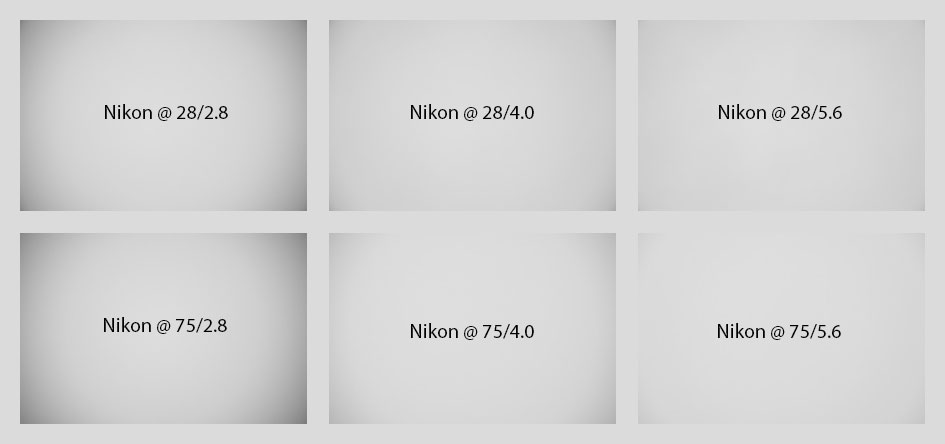
Above:Nikon Z 28-75mm f2.8 at 28mm and 75mm focal length; vignette control = Normal
The sample images above show that with the lens profile applied vignetting is still clearly visible wide open: vignette control set to normal lifts the extreme corners by only 0.5 EV. For a stronger effect set vignette control to high. Adobe’s RAW converter automatically applies vignetting compensation as it was set in camera – but you cannot alter the setting in postprocessing.
Distortions are of the barrel type at 28mm with a slight mustachio effect and evolve to a strong pin-cushion type at 75mm focal length. The setting for distortion compensation in camera is currently ignored by Adobe’s RAW converter and always treated as ON. So for the following comparisons I had to use JPGs:
Distortions:Nikon Z 28-75mm f2.8 at 28mm, as is (top) / with lens-profile (bottom)
Distortions: Nikon Z 28-75mm f2.8 at 75mm, as is (top) / with lens-profile (bottom)
Rendering of point-light sources at night-shots
Night-shots pose a different challenge for lenses as the contrast is even higher than under bright sun and point-light sources can reveal some weaknesses such as coma, haloing and colour-aberrations that do not show up as prominently in other test-shots. The new Nikon should perform like the Tamron 28-75mm f2.8 Di III RXD which showed only mild coma even wide open albeit a bit stronger than from the Z 24-70mm f2.8 S or Z 24-70mm f4 S. Have a look at my review of the Tamron here.
Bokeh quality
Now let’s see how this analysis of out-of-focus point-light sources translates into Bokeh-performance shooting a book-shelf. Crops are from the foreground, middle-ground, and background resized to make them comparable across all my reviews.
Above:Nikon Z 28-75mm f2.8 at 75mm, f2.8; click image for 4k version, here for large original
Above: Nikon Z 28-75mm f2.8 at 75mm, f2.8; click image for 4k version, here for large original
Above: Nikon Z 24-70mm f2.8 S at 70mm, f2.8; click image for 4k version, here for large original

Above: Nikon Z 24-70mm f4 S at 70mm, f4.0; click image for 4k version, here for large original
Comparing the lenses at their longest focal length and largest aperture these test shots clearly show the advantage of a f2.8 focal ratio over a one stop slower lens. Of the f2.8 lenses both the Z 28-75mm f2.8 and Z 24-70mm f2.8 S look very similar in the transition zone (middle-ground) but the Z 28-75mm f2.8 loses over the Z 24-70mm f2.8 S in the background with a more nervous Bokeh due to outlining and double contours (see below):
Above: Nikon Z 28-75mm f2.8 at 75mm, f2.8, 100% crop; click image for 4k version, here for large original
Close-up performance
Like the Tamron 28-75mm f2.8 Di III (1st generation) the new Z-Nikkor produces very usable results in the center while becoming increasingly soft beyond 10mm image height. For an example and comparison with the Z 24-70mm f4 S head over to my Tamron 28-75mm f2.8 Di III review. There are also some close-up shots on the next page. For better sharpness stop down to f5.6 or even further.
Flare, ghosting, and sun-stars
Catching a strong light-source shining directly into the lens is always a risky business: it could produce strange colorful ghost-images or reduce contrast considerably through flare and glare. The appearance of flare and ghosting depends on factors like the aperture and the angle of the light hitting the lens. So to judge the proclivity of the new Nikon Z 28-75mm f2.8 for these artifacts I went through a series of well calculated shots against a strong light source to provoke glare and ghosting. The lens hood was mounted in all shots. Following are just two examples at different apertures and angles. The little bright square inset in the upper left shows the respective area with an exposure compensation of +3 EV to make it easier to see which levels of black the lens renders at that point:
Above: Strong light hitting the Nikon Z 28-75mm f2.8 at 28mm, f11; click image for 4k version or here for +3 EV exposure compensation
Above: Strong light hitting the Nikon Z 28-75mm f2.8 at 75mm, f11; click image for 4k version or here for +3 EV exposure compensation
The new Nikon Z 28-75mm f2.8 is pretty clear of flare and ghosting artefacts especially at the short end where it also suffers very little from veiling glare. At the long end the effects become a bit stronger and veiling glare is reducing the overall contrast of a scene a bit. And you should definitely avoid placing the light at or near the center at the long end as the lens produces a strong halo with a conspicuous rainbow border.
Sunstars are are clearly developed at f11 but they form two-pronged spikes which are not quite as attractive as sharper spikes from other lenses.
Next check out my sample images!
Check prices on the Nikon Z 28-75mm f2.8 at B&H, Adorama, WEX UK or Calumet.de. Alternatively get yourself a copy of my In Camera book or treat me to a coffee! Thanks!